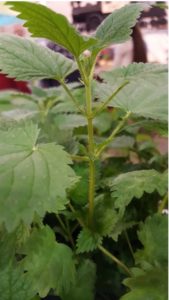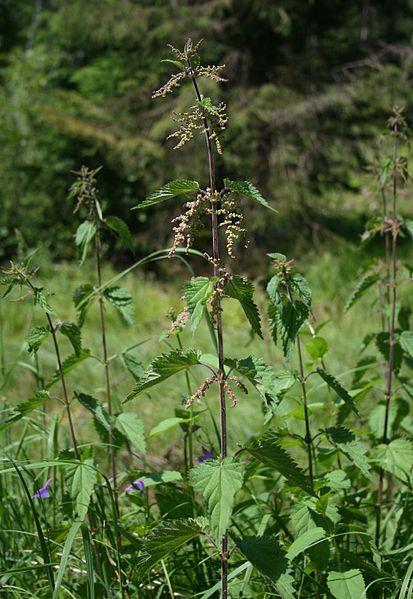
Stiff hairs on stem and leaves
Stinging nettles (Urtica dioica) is a hardy perennial that is native to Northern Europe, Northern Africa and Asia. It is also native to Western North America but has spread throughout Canada and the United States and as far south as northern Mexico. There are six sub-species. All except the fen nettle have the characteristic stinging hairs that give them their names.
The leaves and stems are covered with stiff hairs that are similar to hypodermic needles. The hairs contain histamine and other chemicals which produce a stinging sensation when they pierce the skin. Despite this, the plants have been used for thousands of years as food, medicine and clothing.
You might wonder how stinging nettles are eaten if they sting you. The secret is to soak the plants in water to soften the hairs. The plants, especially when young, are full of valuable nutrients. The Native Americans harvested and cooked the young plants in the spring when there was very little else to eat. European cultures cooked with stinging nettles and consumed them as an herbal tea.
Traditionally, stinging nettles have been used for urinary problems including those associated with enlarged prostates, as well as to relieve the pain of arthritis and the symptoms of hay fever.
Nettle stems contain fibers that have been woven into fabric which was strong and durable and was considered a good substitute for linen or cotton. The fibers have also been used to make ropes and fishing nets.
Stinging nettles are hardy in zones 3 – 10. They prefer wet conditions and are usually found alongside streams and in wet meadows. They will grow in sun or partial shade. Fully grown plants reach a height of between three and seven feet.
Nettles are easy to grow from seed. The seeds can be direct sown in your garden in early spring or started indoors in late winter. Surface sow them. Do not cover them. They need light to germinate. Germination should occur in 10 to 14 days. When direct sowing seed or transplanting seedlings outdoors, it’s a good idea to site your plants away from your herb garden. Stinging nettles spread quickly via both stolons and rhizomes, which are colored a surprising yellow, as are the roots. They will quickly take over your herb garden.
Harvest time is before the plants flower in late spring or early summer. If you wait until they are flowering or setting seed, the plants will contain gritty particles called cystoliths, which can irritate the urinary tract. Always wear gloves when harvesting or handling nettles to avoid being stung. Plants can be soaked in water for immediate use or dried on screens for later use.

